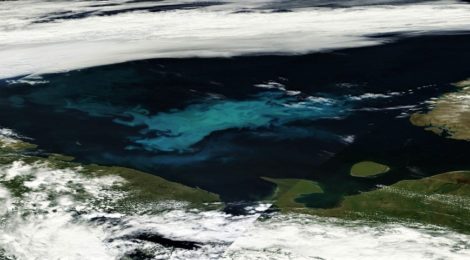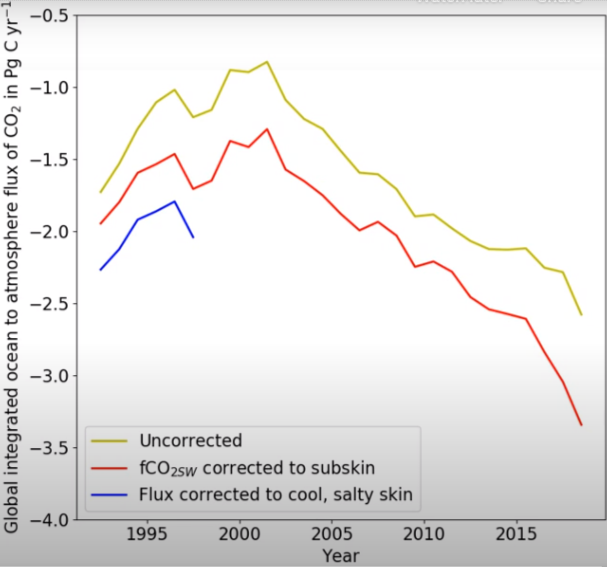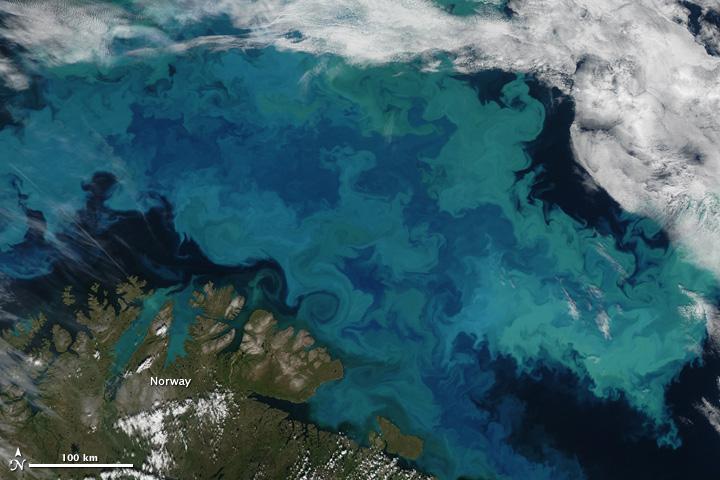
Arctic Ocean Pastures Are Flourishing In Wondrous Bloomsday Not Doomsday
Will World Be Saved From Ravages Of Climate Change By Plankton
Massive Surge In Arctic Ocean Plankton Blooms See World Acclaiming Power Of Ocean Pastures
It seems Mother Nature is doing what she can to adapt to our fossil fool age horrors
We need to help her by replenishing and restoring ocean pastures everywhere
Almost everywhere on this blue planet, plankton blooms, the heart and soul of vast ocean pastures, are in cataclysmic decline. But not quite everywhere! As the Arctic Ice is rapidly disappearing scientists have recorded the fact that Arctic phytoplankton blooms are growing healthier and more richly abundant than ever before. This is a wondrous Bloomsday with fabulous consequences for climate, wildlife, and the fishing industry.
A recent paper published in the Journal Science shows that the growth Arctic phytoplankton, plant plankton, has increased 57 percent between 1998 and 2018. The implications are clear as these tiny ocean plants are the grass of vast ocean pastures and are the bottom of the food chain, feeding and sustaining all of ocean life.
Plankton is a term given to all of the tiny ocean drifters, plants, or phytoplankton, capture sunlight and convert CO2 into life. We all on this planet are ‘carbon-based life.’ Tiny animal plankton, zooplankton, drifters are the grazers of the ocean pasture grass, they include all manner of animal life from tiny copepods to krill to gigantic Salps that join together to form vast translucent nets to catch other drifters for food. Every night away from the light of day zooplankton by the trillions swim quickly from the abyssal darkness in what has been described as the “Greatest Migration On Earth” to feed in the blooms. Fish of course find the zooplankton that accompanies every ocean pasture plankton bloom their movable feast. All of the rest of us, other inhabitants of this blue planet, find fish quite the delicacy.
Microscopic views of phytoplankton found in ocean samples from around the world
Top: NOAA, Bottom: Florida Fish and Wildlife
Performing a meta-analysis of decades of data taken from satellite imagery and more data collected from Arctic research ships, the Stanford researchers have reported that productivity at the base level of this ocean ecosystem/foodchain has increased by more 57% in just 20 years. This is an incredible surge in phytoplankton—one that provides more food for ocean life and yields stupendous increases in the ocean’s uptake of carbon dioxide, a greenhouse gas. It is a boon for both biodiversity and climate change mitigation.
This blooming miracle is the clear consequence of global warming and climate change, as the Arctic ice disappears, and this year the amount of Arctic Ice looks to be tied with the lowest level ever recorded. For some, the removal of the Arctic Ocean from the ice age freezer where life could barely survive is only a doomsday story they love to profit by through selling endless fearful tales that act as click bait. But for most people, those who welcome the blooming of deserts and flourishing of pastures on land, this is the best BLOOMSDAY story ever.
Climate Change Dogma Demands Buzz Kill To Sustain It As An Endless Source Of Academic Research Dollars
Alas for some of the doomsayers their intent is spinning this remarkable good news for the planet story to demean and diminish its good news. In sowing seeds of discontent they proclaim that with the new bloomsday ecosystem shift the Arctic is clearly seen to be destined for, the amount of benefit it may yield for climate is not enough to be a single magical silver bullet. Their inference is that no partial solution to climate change should be taken seriously if it is not a singular miracle that does the entire job of helping the world adapt to climate change. Here’s part of the buzz kill one of the academics from the study offers.
“The Arctic is taking in a lot more carbon than it used to take in,” professes senior author Kevin Arrigo, “but it’s not something we’re going to be able to rely on to help us out of our climate problem.”

This chart shows the long mis-stated, now corrected, performance of ocean photosynthesis in managing global CO2. Today’s cataclysmic collapse of ocean photosynthesis is clearly shown. Click to read more
Just recently another scientific report stated that the role of the oceans, their photosynthesis, in the metrics of global carbon management has been sorely understated as half of what it is. As the bloomsday in the Arctic ocean pastures becomes better understood and that vast area of this blue planet added to the rest of the oceans the power of Nature to adapt and repurpose our deadly fossil fool age carbon emissions from deadly form into new life will surely give all reason for hope.

Another Arctic Barents Sea Bloomsday off the coast of Norway. Click to read an online course on understanding the science of ocean plankton blooms.
Keep in mind that Nature’s ability to evolve and adapt is a very slow process, far slower than we humans are able to endure without great suffering. We must lend a hand to Mother Nature and work to undo the harm we have so thoughtlessly caused.
We can and we must replenish vital ocean pasture mineral nutrients and in doing so become caring stewards, shepherds, of our pastures at sea just as we became good shepherd of pastures on land 10,000 years ago. This solemn duty of caring for the oceans can no longer be ignored while we only exploit the oceans for whatever our violence can bludgeon there to drag back to our shores.
Join me as we begin the work to use our Nature-based methods and technologies to replenish and restore the ocean pastures of 100 Villages. This will immediately send billions of additional fish into the nets and onto the plates of billions of people the world around. As fish are carbon-based life it is a simple calculation to understand that this in turn repurposes yesterday’s CO2 into tomorrow’s new life.